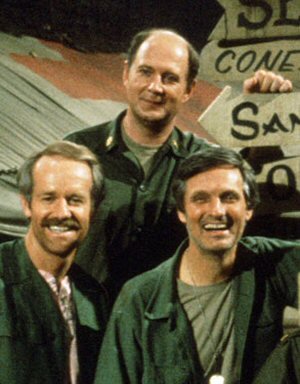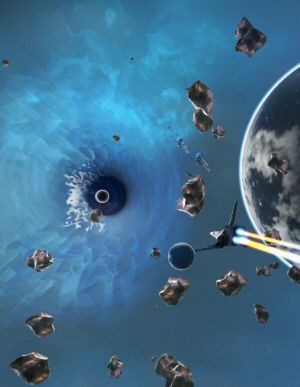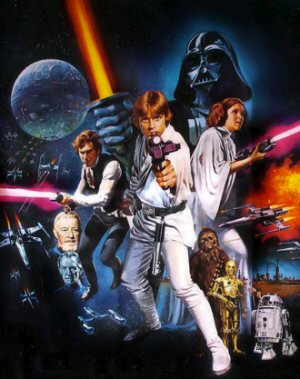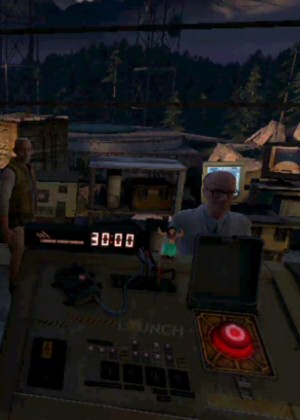No, I’m not talking about any incarnation of Warhammer as an expert or even an informed noob. As much as I *may* know about Warhammer, there are people who have lived and breathed either all of Warhammer or some particular variant for long enough to pick anything I say apart. So I’m not even going to pretend special knowledge. In fact, other than knowing what Warhammer 40,000 was; I never had any interest until a few years ago. And as far as enjoying the core dynamic, tabletop war-gaming aspect, it’s not gone well. A few years back I got keenly interested, bought an Adepta Sororitas box set that was getting harder to find but was still reasonably available (I bought it off of eBay from Britain, something nearly impossible at the moment) and one of my kids got a Space Wolves box. And then a new version of Warhammer 40k was released that changed the rules, and according to some people made both box sets at least half-pointless.
We still have the boxes. I like building models and have never gotten in to miniatures-building, so that’s a possibility. Except every time I think I’ve got a grasp on how to paint miniatures I come across another video that does things exactly the opposite and claims it’s the best way to paint. And fundamentally, my inherent OCD conflicts with, as far as I can gather, a fundamental conceit of Warhammer 40K: it’s not meant to be taken seriously AT ALL.
Warhammer started out as Warhammer Fantasy Battle in 1983. It was a miniatures tabletop war-gaming system, such as had been popular for a while. This was the same concept that informed Dungeons & Dragons. Except while D&D increasingly embraced

Warhammer did something different: it was the first (successful, anyway) war-gaming system built around ITS OWN MODELS. Now, I’ve tried to figure out how this worked. Because technically you could STILL use whatever miniature models you wanted. Right? But I have certainly formed the impression that this is frowned on by the majority of the Warhammer community and is almost entirely forbidden in community tournaments. And absolutely forbidden in “official” games, which is a real thing that the creator, Games Workshop, does. While I can see how “official” rules would forbid using “non-official” merchandise or rule-sets, I have a hard time understanding how this has expanded throughout the Warhammer fandom. It’s so pervasive that, as I mentioned, when the two boxes of miniatures we had that were published under, IIRC; 8th Edition rules were not included in 9th Edition rules, there was a pretty consistent dialogue that they were useless unless a named unit was specifically included, which could also happen with future rules updates.
But anyway, the point of all that is to say that Games Workshop based Warhammer Fantasy Battle on proprietary models, AND made it STICK. To the extent that the various versions of Warhammer to this day use constantly changing model sets as the basis of their business plan. The single most common complaint I have seen about Warhammer is that GW hasn’t updated a particular faction in a while, which seems to put said faction at a disadvantage. I suppose this is a form of nerfing, then. After all, if one particular faction has been updated with a new rule set, but another is/was built for an older rule-set and is just being incorporated into the new system, their specific battle rules may not take proper advantage of the new system. I suppose. Games Workshop tried to change things up a few years ago by ending the Warhammer game and replacing it with “Age of Sigmar,” which to me is similarly-themed but of course requires all new miniatures and uses many new factions and rules. This apparently didn’t last long, as the original setting has just been re-released as “Old World.” Except using new miniatures and new rules.

I don’t actually know as much about those settings as I do Warhammer 40,000, which was launched in 1987. I guess because I was much more into tabletop games by then (mostly Star Wars The Roleplaying Game by West End Games) I was aware of 40K in ways I never was with the first game. 40K takes the same ethos as Warhammer but moves it into the 41st Millennium, with lore to explain how humans got from Warhammer in the fantasy past to Warhammer 40K in the far future. Are any of these ideas original? Ehhhhh…not many. Maybe not any of them. Even the original game sourced a lot of lore from easily-identifiable or generic sources. The thing Warhammer had conceptually was this “grim, dark, crapsack world.” In my opinion, Warhammer 40K amped this up with the move to a new setting. I kind of wonder if that was the point, really. You think REALITY sucks? Come play this game where being alive is nothing but pain. And that’s from the humans’ point-of-view. You could also play as ancient alien robots. Sure, that sounds cool but you have no soul. No identity. No thought. Oh, you USED to be an individual, but your king stole all your souls and made you all robots to win a war against gods. No, that was actually maybe a good thing because you all had SUPER CANCER and lived in constant pain and knowing you were gonna die Real Soon Now. Or you can play as this other alien race that’s super cool but you don’t hardly ever reproduce and you’re kind of easy to kill except for the super-powerful leaders AND YOUR GOD IS GONNA EAT YOU WHEN YOU DIE. So don’t do that, in this galaxy designed specifically to kill you as quickly as possible.
Everybody is psychic, unless you’re not, or one of the really weird ones who are ANTI-PSYCHIC. There is one major faction that has very few overtly psychic individuals, but everybody kind of believes the same basic concepts, and their thoughts are so simple and direct that the collective psychic force of their belief can OVERCOME PHYSICS regularly. The humans have a faction with a similar ability, although more focused and situational. I mentioned early on I had an Adepta Sororitas box, and one of the things that faction is known for is such astounding, deep, and abiding faith in the idea that the Emperor of Mankind IS ACTUALLY AN OMNIPRESENT GOD they can manifest miracles.

But that’s not to say gods aren’t real. They are. And The Emperor of Mankind *may* actually be a god. Or he may be dead. It could go either way. Hyperspace in Warhammer 40K is the flip-side of the universe that enables faster-than-light travel. At least for some factions. Except it’s not just hyperspace, it’s literally hell. I mean, a version of it, anyway. That’s where all psychic energy comes from, and it’s where the actual gods are. There are a few big gods, and probably many little gods. That we know of, anyway. The easiest to understand is Khorne, the Blood God. If you’ve ever heard or read “Blood for the Blood God,” that’s a reference to Khorne. Similarly Nurgle is also well-known; the God of Disease. You’ll see allusions to Nurgle in many properties. Less-known are Slaanesh, a young god spontaneously created about 10,000 years prior to the “current events” of Warhammer 40K. Basically the space elves were so good at being the best at everything, they were increasingly focused on extreme pleasure, obsession, and achieving just to achieve…which created a god. Unintentionally, but still. Hardest to understand is Tzeentch, the God of Change, who technically kind of fills in in between the boundaries of the other gods, but is also the primary user of sorcery; as magic such as this is pure chaotic change. There is technically a 5th Chaos God called Malice, but you have to be pretty dedicated to a specific idea to make sense of this god. So I’m just going to mention it and move on.
There are other gods, both racial and historical. Their reality and impact on the ongoing galaxy is taken very seriously by some and ignored by others. The Orks, for example; have two gods that seem to exist solely to start a fight. Which I’m sure they’re thrilled about, if they know.

The Orks may be the poster-child for “you’re not meant to take it seriously.” They’re not dumb, but they do limit their thoughts to only a few things. Orks grow until something kills them, so the bigger an Ork is, the older they are, AND more important. Because if you’re bigger, you’re probably more adept at killing things smaller than you. Orks are practically infinite and reproduce through spores, being intelligent, bi-pedal, humanoid fungi. Which means that any planet an Ork has been on just has Orks now, and always will. Unless you THOROUGHLY burn the ENTIRE PLANET. Which almost every other faction in the game *can do,* but the people who CAN do it have to KNOW about it, and the galaxy is big enough that that doesn’t happen much. The Orks, along with almost every other faction, can legitimately claim they will inevitably win the galaxy. But the Necrons can say that, too (the race of robot people I mentioned). So can the Tyranids (an extra-galactic threat somewhat like the “bugs” from Starship Troopers. In fact, the more intelligent and technologically-accomplished your faction is, the more you are aware you’re *probably not* making it out of this setting alive in the end. On the other hand, maybe you are the only way to survive.
But as I pointed out, even though you CAN take it seriously; I really don’t think you’re meant to. It’s an absurd setting where absurd things happen. But it also doesn’t really matter. If you find a faction you like, and some stories you like, you can play the game however you want and IT DOESN’T MATTER. In the end, really; the only ones getting in the way of the fun seem to be…Game Workshop.
Dear Hollywood: Do a Mash Reboot

Since we're rebooting everything, MASH will probably come up eventually. Here are some casting suggestions.
The Disappointment Engine

No Man's Sky is a game seemingly engineered to create a cycle of anticipation and disappointment.
If Star Wars Was Made in 2006?

Imagine if the original Star Wars hadn't appeared in the 1970's, but instead was pitched to studios in 2006. How would that turn out?
Push the Button!

Scenes from Half-Life 2:Episode 2, showing Gordon Freeman being a jerk.
Bad and Wrong Music Lessons

A music lesson for people who know nothing about music, from someone who barely knows anything about music.
 T w e n t y S i d e d
T w e n t y S i d e d

I played for a bit. I could never really get past the idea of the super-high-tech antigrav tanks of the future with massively powerful guns… that can shoot _almost_ 3 times the length of the tank. And I know that that’s just a necessary conceit if you want to play battlefield games with 8-inch tanks and don’t conveniently have a spare football stadium to play in, but it still feels profoundly dumb.
I can see that. I don’t have a problem with managing to frame it within the game; like I said you have to sever the connection to reality or keep the wargaming aspect SEPARATE from real-life. The thing that blocks me more is my indecision about how to paint the miniatures. And really you don’t even HAVE to. Lots of people start off with unpainted pieces, then progress to badly-painted miniatures…and then some get better, some don’t, and there are an awful lot of badly-painted GW miniatures on eBay. But that’s my own mental hang-up.
I just had this article pop up in my feed and immediately thought of this thread
https://www.goonhammer.com/goonhammer-historicals-essentials-scale-in-wargaming-or-why-are-bolters-so-short-ranged/
Thank you for sharing that!
I am also thankful, that was a cool article.
One thing I would like to add though, is a game play reason for short shooting ranges in many games that I’ve heard (my apologies for not recalling the source):
Games tend to have the most exciting gameplay if effective weapon ranges are no more than 3-5 times the movement range of units. If you can easily shoot further than that, movement becomes irrelevant, and the game ends up very static. If the range is much shorter than that, movement trumps all range. That’s not as big a problem, but it will tend to increase ‘melee’ type power and won’t create much verisimilitude for powerful ranged attacks.
Effective range doesn’t have to be the maximum range, either. In Space Crusade and Space Hulk, for example, all weapons have infinite range, but getting a clear shot still requires moving through the tight terrain. Effective range is therefore within this recommended range.
DnD changed like this over the editions, too. Ranges decreased noticeably past 3.5ed, specifically to make players need to move more (and full attacks can be made on the move 5ed, so players actually want to not sit still anymore either).
PS: I love my Battlemechs that can shoot out to 270m and punch out to 30m!
As someone who’s sitting deep in both 40k and WFB for almost 35 years I can say you have already figured out the most important bit.
The other is that it’s an universe running on faith (which is why orktech and Sororitas miracles work), so it’s really impossible to say something would never fit in any way into the Warhammer universes (let’s not forget lasguns and bolters in 1st ed WFRP).
As for playing, just go small scale – think old Necromunda or even Inquisitor (both horribly out of print and living rulebooks can be found online. And if you can find it anywhere the original necromunda box has marvellous and very flexible set of 3D terrain) and have fun from here on. It’s not like GW will send goon squads to check tables at your local hangout anyway. Also, a lot of people simply stick to old editions they prefer.
I had wondered about Necromunda. People have talked about it like it’s an environment where anything is plausible and it’s built for simple, fast games. I will look into that.
The original Necromunda was great. (The more recent reboot may be too; I’ve no idea.) It solves the scale problem by being about a small gang of ragtag ruffians with bad tech, and it adds a bit of story arc to things by having a system to level your guys up, but also carry their wounds from battle to battle. It falls apart if you try to carry your gangs for too long and get too invested – you have to be willing to start over when they’re completely wiped out, which will happen.
It’s also super-fun to build terrain for. Literally every piece of cardboard or foam packing material in the modern world is perfect terrain for the high-tech garbage-dump of the future.
As Dev Null said, original (1st and 2nd ed) necromunda is a small story of a 6-12 strong gang (most people aim at 9 models and stay there, it’s the sweet spot of size and upkeep costs).
It’s a bit more difficult to fit non-gangers into it, but there’s always a Space Marine/Eldar/Chaos/Ork/whatever scouting mission/straggler squad or a genestealer cult, so it’s completely doable. Overally it’s an excellent emerging storyline of how your bunch does against everything opponent and the hive throws at them, and some campaigns can last for years.
The new (3rd ed) Necromunda is far more flashy, but unfortunately designed for a string of no more than a handfull games before “advancement tables” and steam run out – because it was designed not for prolonged play, but for an afternoon of an event at most.
I never played Necromunda but I did enjoy Gorkamorka. Similar idea of having a small squad who you keep between games, but with orks
Gorkamorka was a special kind of madness. I loved the transport rules:
“If a squad fits on the vehicle model, they can ride on it. But any models that fall off actually fell off in the game, too, and get hurt accordingly.”
I only vaguely remember a reference to this being a game. I’ll have to look it up.
I didn’t get to play it much as I only had my brother to play with and he didn’t really enjoy it, but it did a great job of recreating the chaos of ork gangs fighting over territory. One time my brother got a lucky shot on the vehicle before I’d had a chance to disembark everybody and exploded the engine. My gang went flying everywhere, almost all of them picked up serious injuries and the truck was totaled. Great fun
On second thought, let’s not go to Warhammer. It is a silly place.
I could respond with *so many* quotes. But instead, I will award you one delta for making an EXTREMELY appropriate and funny reference comment.
Warhammer is somehow both non-serious and very serious. If you ask too many questions, the fans retreat behind it being a game. Yet the quantity of lore books and novels show how very real it is to people.
You’re not wrong. It’s so easy to get caught up in the voluminous lore; but at some point you will realize you are reading (or hearing) something that SHOULD be a game-changer or overriding factor, and yet somehow it’s…not. And you must remember it’s just a show and you should really just relax.
I like this “Omni-Lore” format.
(Tries not to glance at my too large collection of miniatures and piles of grey plastic in shame…)
40k certainly started very non-serious. In the Beginning, the Space Marines were much more like the ones from the movie Aliens, fighting space orks on planets full of dinosaur cows and laser mushrooms. After adding more Aliens, Dune and Star Wars influences, and garnishing with some 80s punk, it started to form into something resembling a parody of conservative policies (not to the degree of quality many fans, including myself, would like to think), but it was there.
While every part is derivative, the resulting mess is something that is different from its sources. And once it started rolling in big money, the fans got more serious, and the creators got more serious, and then marketing got entirely serious.
Games Workshop went from a garage scale business trying to start a punk rock label on the side to a major IP licence business that tries to crush all perceived copyright challenges via legal Exterminatus. Whatever 40k is today, it has changed numerous times over the years (and each time some fans stayed behind or branched off, while new ones joined).
If want to play with the minis, I suggest picking a rule set and sticking with it in your group, regardless of what else gets released. Less stress that way.
If you want to learn to paint, I suggest getting a bag of cheap army men figures and practicing on those until you’re happy enough to try on the more elaborate 40k ones.
(Sorry, I have too much to say on 40k, and probably did already).
You talk about 40,000 all you want. I am eating it up. I am trying right now to kick-start the idea of just going and putting my models together. That’s step one. What step two is can wait.
Nah, my relationship with 40k is convoluted and not entirely clear even to myself lol If I start rambling I’ll forget to eat. But thanks.
Step one is a perfectly valid only step, too. They are great models, even if not painted.
I’ve actually found that my models were luckier on the battlefield unpainted, and always died incredibly fast in their first fully painted game (afterwards their fates started mellowing back to statistical averages, or so it felt).
My main problem with WH40K is that it’s so based on its miniatures. That means the design space for the alien species is very narrow, only the Tyranids really deviate. Orks are space fungi? That means nothing in practice, because the way this space fungus spreads is by growing dudes with sticks and guns, sometimes dogs and occasionally cars. I can almost hear the writer’s room. “All the orks are male, dude, how do they reproduce?” “Let’s just say they’re space fungi, nobody wants ork ladies.” There are SO many more interesting things you could do with space fungi. The Jain from the Polity series is one example, the Antithesis from Stray Cat Strut (an amateur web novel) is another. The Necrons work the same way, even though they are sentient computer programs who could feasibly inhabit all kinds of different shaped machines – dudes with guns and sticks, sometimes cars. Ironically, the faction with the body plan that deviates furthest from humans is the Adeptus Mechanicus, a human faction. 50% of the total factions are just big dudes in differently colored power armor. For a setting that sets out to be as over the top as possible, all I see is wasted potential.
Also? If a faction sells well, nothing will ever happen to them. Nothing happens to anyone, really. Some planets get blown up occasionally but it doesn’t matter because there are millions of them. When a planet blowing up is business as usual and carries no real stakes in the setting, you done messed up. The Necrons are said to possess a galaxy-ending superweapon… only so long as the franchise keeps selling, it will never be used, so functionally it does not exist.
Yeah, those are my biggest issues with 40k. Although the bigger problem for me is that I can’t really get invested in any of the conflicts – if people getting killed by the millions every day is business as usual, why should I care about any of this?
However, the lack of imagination is also a big problem. In addition to the games (so sad that TotalBiscuit never got to see Space Marine 2!), I also watch/listen to Poorhammer – a WH40k podcast, although they dabble in Age of Sigmar, as well. I mainly watch it to see the different models they constantly show as B-roll. And it’s utterly exhausting that 90% of all models are just dudes in power armour.
But then again, I’m not into models or minis, and the 40k races I like the most are all xenos. So who cares what I think :D
Both of you have really nailed my central problem with the setting (the painting issue is separate). The lore is really great for selling a faction, if not all of them to everybody; but so much doesn’t actually translate to the game itself. I had mentioned above you have to kind of separate the lore from the game, because the game (any version or application) has to play by a set of rules that *allegedly* work for any faction. Meddling by GW to make money is a layer on top of that, but if your gut tells you that the lore says X, but the game always plays out Y, there will be some disharmony unless you can effectively put a wall between those ideas.
That lack of connection between the lore and the game is what finally killed it for me. I started playing 40k because no one in my new town played fantasy, and I picked the Eldar, because I loved the small squads of pretty aspect warriors. And then the game said “NO! Aspect warriors SUCK in this version. You will buy tanks and fighter jets!” And I said “But I don wanna paint big stupid boring expensive tanks!” And the game said “Then you will LOSE!”
And then 3 months after I quit they rebooted the rules and apparently Aspect warriors were great again, but by then I had ceased to care.
See, that’s the kind of complaint I see a lot, and it makes me wary of getting too involved. The apparent solution is to find what works for me and stick to that. It *might* work in my situation, as I currently live in an area with NO other players unless a family member wants to play. Which, as I mentioned above, someone is interested. Outside of my family, I would have to travel to another city to find a game, and from what I’ve checked so far even that is limited. One reasonably-close city does have a fairly large university, so with enough digging I might find something. But that, of course, would be adapting to what that/those groups are comfortable with.
The Tyranids also started as guys with guns in the beginning. In fact, they were meant to be more dinosaur/extinct creatures like than insects. That came later when they were merged with the genestealers (who were initially ‘mutated guys with guns, but not like the other mutated guys with guns’).
Necrons were pretty samey in 2nd and 3rd ed. The latest books have improved a lot they now have robot snakes, spiders, beetles and some more. Their basic troopers are still humanoid, though.
A lot of this came from the way the initial army’s were written:
You had the guys, with their statlines. And then you gave them faction specific gear. Basic Space marines got power armour and boltguns. Basic Eldar got shuriken launchers and space mithril nano-chainshirts. Bsic Orks got junk metal plates and Shootas. Heroes got slight boosts to their statlines, specialists got to swap their guns for other weapons. But otherwise, everything followed this formula.
It took a paradigm shift in the writing, before this started to change, I think, and by then a lot of the lore ideas were already settling in.
So this occurred mostly by accident. Check out this video, the whole channel is just filled with Warhammer History by the designers who created it, highly recommend.
Rick Priestley on Warhammer Fantasy
For those who don’t want to watch the video, the miniatures came first, they noticed they were selling large lots and they threw together a ruleset for mass battles to boost miniature sales, and it worked beyond their wildest imaginations.
When it comes to using non-GW miniatures in games and tournaments. I have never met someone who has objected to that, I’ve been doing miniatures for over 20 years at this point. The key thing, since these are representative game tokens, is you need to be able to quickly and easily identify what is what. As long as you can do that, no one cares. Since the rise of 3D printing, it has become more and more common to have entirely custom armies based around specific themes. One of the top imperial guard players, who regularly goes to official GW tournaments, has a 3D printed army that’s Halo themed.
What the GW models do is provide a baseline. They are generally the easiest way to get them models you need, if not the cheapest. They let you know how big the bases should be and what sort of silhouette the model needs to occupy if you are kit-bashing or printing something custom or similar.
The newest edition is one of most balanced and easy to get into rule sets for warhammer 40k in a while. I’d just go to the official GW website, download the core rules and chuck some models on the table. You’ll quickly get the hang of it.
It does make sense that they started out with the miniatures. That kind of explains why they seem so dedicated to the models first. I have to admit my very limited experience has led me to form a different impression, but, I repeat; it’s *very limited*. And I’ve got a lot of information on YouTube, which may limit the scope.
One of Games Workshop’s shareholder statements 10 years or so ago literally said “Our target market is collectors who buy our magical miniatures”. Circular reasoning and self-aggrandisement aside, it’s exactly what you guys are saying.
Until the Primaris Marines came, the Space Marine Tactical Squad box (10 basic marines) allegedly accounted for 40-50% of their total sales. Space Marines are their best-selling faction, but also work as the base line for many kit-bash projects.
Lately, there seems to be a shift though, to selling big, limited run set piece models that aren’t practical for gaming. They look great, are well designed, evocative and are a joy to paint (assuming you like painting). BUT: They don’t fit into carry cases, so good luck getting them down to the games store without something snapping off.
An example that stood out to me are the new flying Black Coach (can’t remember the new name) for the undead age of sigmar faction, or the latest Commander Farsight and his cherry tree.
But their miniatures, for the most part, really do look that good.
Interesting read. For the last couple of years my friend, who now has 3 armies and has begun painting some of them, has been telling me every now and then about the lore, occasionally taking me into Games Workshop to feel like a lemon while he looks at stuff and tries to convince me which ones I’d “vibe” with, and occasionally trying to convince me to get into it. I’m not sure he’s played an actual game itself though, but he seems to be enjoying as a modern (?) version of the dad hobby of model aeroplanes and learning about WW2, and then telling people about the history – but in this case model Tyrhannids and learning and regaling about 40K lore.
I must say, I am fairly glad that I never became one of the nice nerdy lads who would sit in Room 5 at lunchtime at school and play such things with the Geography teacher. I suspect I would have got precious little exercise as a child if I had!